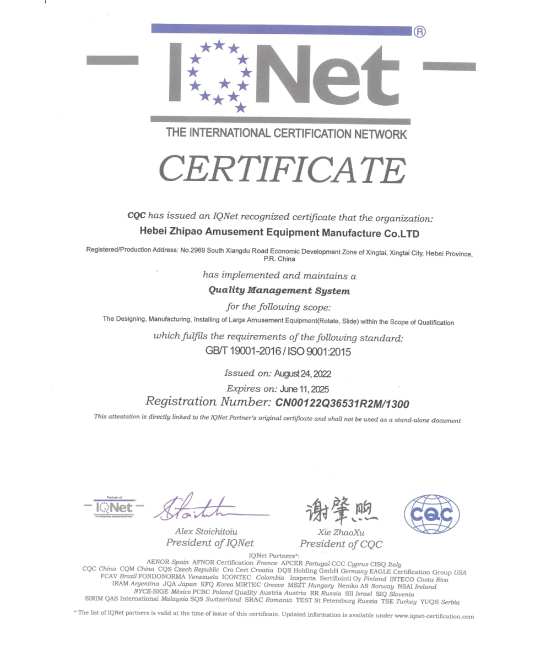- Albanian
- Arabic
- Belarusian
- Bengali
- Czech
- English
- French
- German
- Hebrew
- Hungarian
- Indonesian
- irish
- Italian
- Japanese
- kazakh
- Persian
- Russian
- Thai
- Uzbek
- Vietnamese
roller coaster challenge
The Roller Coaster Challenge Thrills, Physics, and Engineering Marvels
Roller coasters have long been a symbol of thrill and excitement at amusement parks around the world. These towering giants twist, turn, and plunge through the air, delivering heart-stopping moments to those brave enough to climb aboard. But beyond the screams and laughter that accompany a ride, roller coasters represent an incredible intersection of art, physics, and engineering. The Roller Coaster Challenge not only highlights these aspects but also invites enthusiasts and innovators to explore the mechanics behind the magic.
The Physics of Fun
At the heart of every roller coaster ride lies fundamental principles of physics. The thrill of a steep drop or a sudden loop can be attributed to concepts such as gravity, inertia, and centripetal force. When a train ascends a hill, gravitational potential energy builds up. As it descends, this energy is converted into kinetic energy, propelling the train forward with increasing speed. This transformation is what gives riders that exhilarating feeling of weightlessness on a drop.
In loops and twists, centripetal force plays a crucial role. As the train navigates these curves, riders experience g-forces that push them back into their seats, enhancing the sensation of speed and thrill. Understanding these principles not only enriches the riding experience but also provides a foundation for designing safer and more exhilarating rides.
Engineering Marvels
The creation of a roller coaster is not just a feat of imagination; it requires careful planning, precision engineering, and a thorough understanding of safety protocols. Designers and engineers work collaboratively to create structures that can withstand the immense forces involved in each ride. This includes calculating materials' strengths, considering the weight loads, and ensuring the track’s integrity throughout the coaster’s operation.
Modern roller coasters utilize cutting-edge technology and materials. For instance, steel coasters allow for more complex designs, featuring steep drops, sharp turns, and inversions that were once unimaginable. Additionally, advancements in computer-aided design (CAD) software enable engineers to simulate the coaster's performance, allowing for fine-tuning before construction begins. These innovations lead to an array of diverse coasters, from wooden classics that hark back to the early 20th century to high-tech magnetic launches that can rocket riders from 0 to 100 km/h in mere seconds.
roller coaster challenge

The Thrill of Competition
The Roller Coaster Challenge is more than just a test of bravery. It serves as a competitive platform that brings together coaster enthusiasts, engineers, and designers to showcase their skills. Participants are often tasked with designing their own roller coasters using software, competing for the title of the most innovative or thrilling ride. These challenges typically require teams to consider not only the thrill factor but also safety and efficiency—two paramount aspects of any coaster design.
Competitions like these inspire creativity and problem-solving, encouraging participants to think outside the box. They push the boundaries of what is possible, fostering a generation that is excited about engineering and design. Through collaboration and competition, people from various backgrounds can experiment, learn, and share knowledge in an engaging environment.
The Psychological Aspect
Beyond the physical sensations and engineering feats, roller coasters hold a unique place in psychology. They evoke a thrilling fear that can lead to a cascade of endorphins, leaving riders feeling exhilarated long after the ride has ended. This adrenaline rush has a peculiar allure, drawing people back to the rides time and again, despite—or perhaps because of—the fear they inspire.
Riders often bond over their experiences, sharing stories of bravery and excitement. This communal aspect enhances the thrill, making roller coasters not just rides, but social experiences wherein people connect through their shared adventures.
Conclusion
The Roller Coaster Challenge embodies a captivating blend of physics, engineering, psychology, and community. It highlights the way roller coasters have evolved over the years, serving as a testament to human innovation and creativity. While the rides provide moments of sheer joy and terror, they also deepen our understanding of the forces at play in our world. As enthusiasts continue to push the boundaries of design and experience, the future of roller coasters promises to be as thrilling as the rides themselves. So, as you buckle up for your next coaster adventure, remember that there’s a whole world of science and innovation behind every twist, turn, and drop.
-
Flume Ride-Hebei Zhipao Amusement Equipment Manufacturing Co., Ltd.|Thrilling Water Attraction&Customizable DesignJul.30,2025
-
Flume Ride - Hebei Zhipao Amusement Equipment | Water Coaster, Thrilling DescentJul.30,2025
-
Flume Ride - Hebei Zhipao | Thrilling Water AttractionJul.30,2025
-
Flume Ride: Thrilling Water Attraction by Hebei Zhipao|Log Flume Manufacturers&Flume Ride DesignJul.30,2025
-
Flume Ride-Hebei Zhipao Amusement Equipment Manufacturing Co., Ltd.|Thrilling Water Coaster, Safe DesignJul.30,2025
-
Flume Ride-Hebei Zhipao Amusement Equipment Manufacturing Co., Ltd.|Thrilling Water Attraction, Safe DesignJul.30,2025
